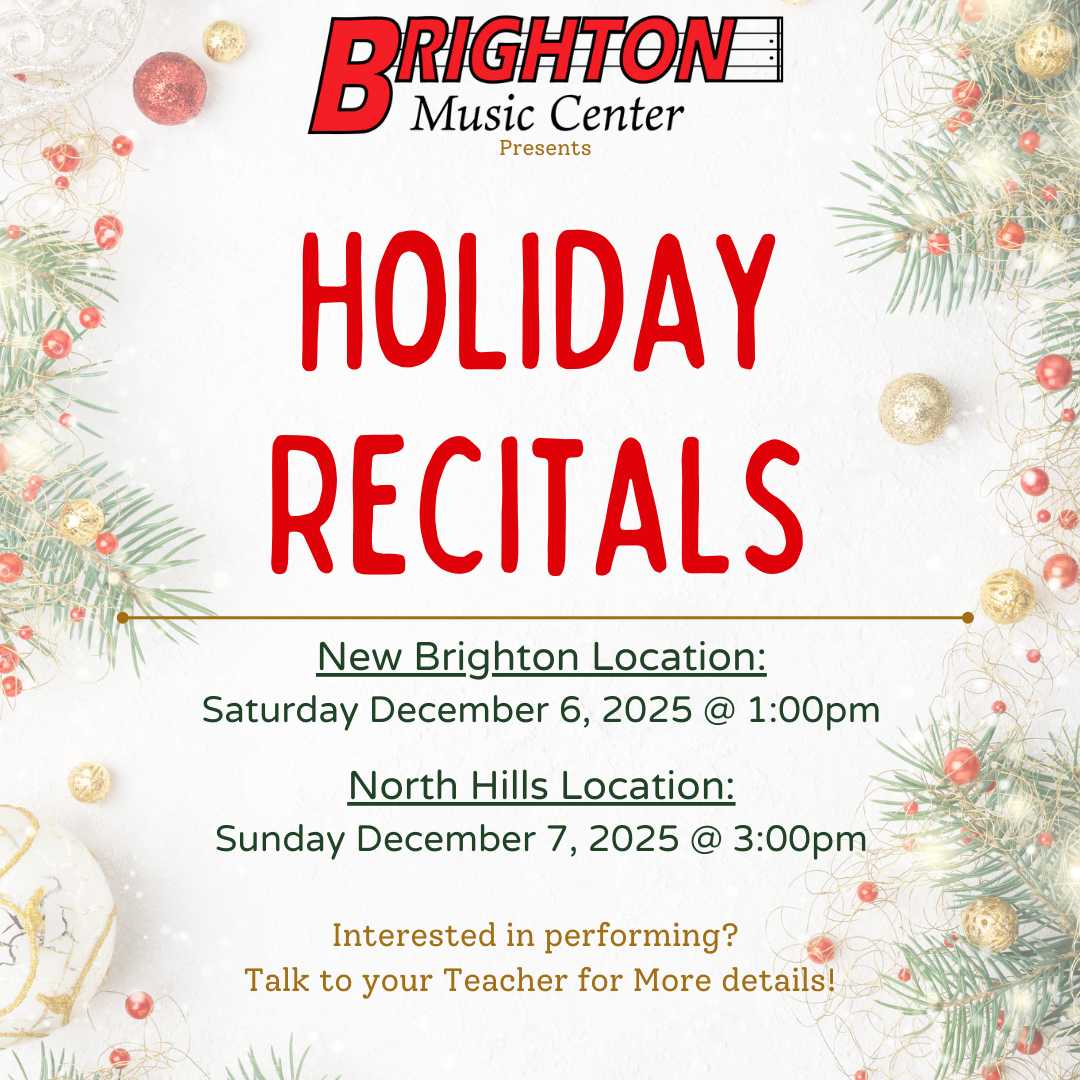Brighton Music Center Rental Instrument Guide
When your child first brings home their instrument, it’s exciting, but also a little overwhelming. Every case has multiple parts, and it’s important to know what comes with the rental, what needs to be returned, and what’s okay to replace as you go.
Below is a quick breakdown by instrument. Items marked with a * must be returned with the rental at the end. Other items are consumables – meaning they’re used up and replaced over time (like reeds, oils, or rosin).
All instruments include a hard-shell case and a name tag, and all mouthpieces are sanitized before being rented out. We got you!
Flute
- Cleaning rod*
Clarinet
- Mouthpiece with cap & metal ligature*
- Cork grease
- Swab
- 2 starter reeds
Alto Saxophone
- Mouthpiece with cap & metal ligature*
- Cork grease
- Body swab
- 2 starter reeds
- Neck strap*
Trumpet
- Mouthpiece*
- Valve oil
French Horn
- Mouthpiece*
- Rotor oil
Trombone
- Mouthpiece*
- Slide oil
Violin / Viola
- Bow*
- Rosin
Cello / Bass
- Fabric case
- Bow*
- Rosin
Bell Kit
- Metal instrument stand (2 parts)*
- Bells*
- Snare pad*
- Drum sticks*
- Mallets*
- Music stand insert for the bells*
Snare Drum Kit
- Drum*
- Drum stand (2 parts)*
- Rubber drum pad*
- Drum sticks*
Having the right parts in the case helps your child succeed, and makes sure nothing gets lost along the way. Consumable items like reeds, oils, or rosin will need to be replaced from time to time, and that’s completely normal.
If you’re ever unsure about what belongs in your child’s case or what should be replaced, just ask, we’re always here to help.

